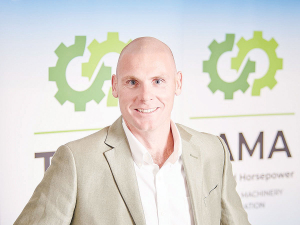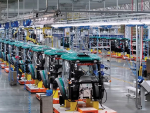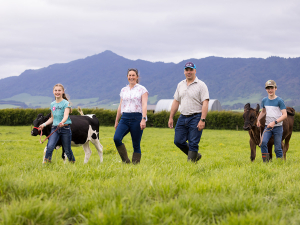Deere NZ territory manager Jaiden Drought was elected new president of the Tractor and Machinery Association (TAMA) at its August annual meeting.
Meanwhile, Chris Bain was re-elected for another year as vice president and the organisation also expanded its management board from three to six. Ian Massicks, Josh Vroombout and Richard Anderson were reappointed, while three new members were added – Liam Hines, Paul Holdaway, and Tim Fanning.
Outgoing president Kyle Baxter was thanked for his seven years of service in leadership positions at the organisation, which represents New Zealand’s farm machinery importers, manufacturers and retailers.
TAMA chief executive officer Phil Holden says Baxter served three years as president, two years as vice president and two years on the leadership group, which was a huge commitment.
“TAMA has grown during his period of leadership, and he is leaving it in a strong financial position.”
Drought echoed Holden’s words saying Baxter leaves TAMA in good stead.
“We now have several young people on the leadership committee who are ready to grab the ball with both hands and take the opportunity to think outside the square. We can try to do some different things to give TAMA members more bang for their buck.”
Baxter says that after seven years in leadership positions the time was right to step aside. He added that some of the highlights during his time of leadership at TAMA included helping to raise the Government’s awareness of how the border restrictions during the pandemic impacted access to overseas machinery technicians. He also pointed to expanding the membership of the organisation to include farm machinery retailers and associated members.
Baxter believes that more detailed reporting has given distributors and retailers the ability to improve the services they provide and the type of machines they offer in different areas.
“Along the way, we have held two successful TAMA conferences. Besides these being great networking opportunities, they have covered such relevant topics as recruitment of staff and what dealerships of the future may look like,” he says.
“Looking ahead a challenge facing the industry is the right to repair equipment, which is currently under discussion in both the US and Australia. New Zealand will follow Australia’s lead when it comes to allowing farmers and contractors to repair their machines.”
Baxter reckons that local machinery distributors are not overly resistant to the right to repair or carry out certified software upgrades. All dealerships sell spare parts over the counter that owners use to repair their machines.
“However, there is more concern about the right to modify equipment outside of manufacturers’ design parameters. Whether this is structural or software changes to integral parts of the machine,” he explains. “A good example is the modification of engine emission controls on engines, or the ability to modify software designed to meet safety regulations.”



















